
All categories
Featured selections
Trade Assurance
Buyer Central
Help Center
Get the app
Become a supplier

(4327 products available)








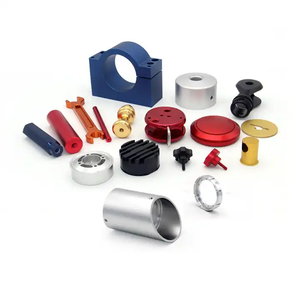
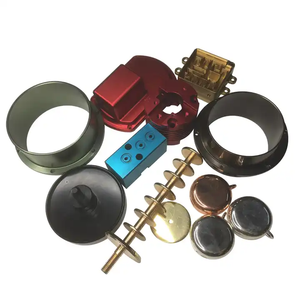










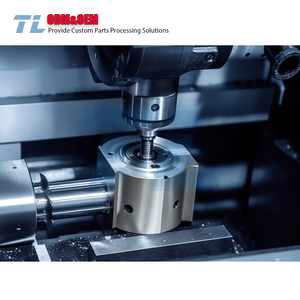














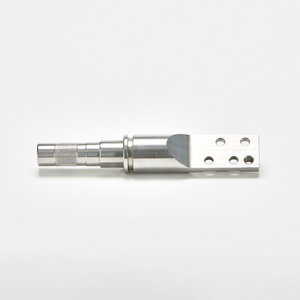




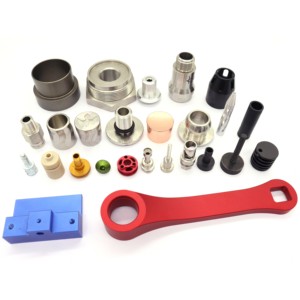
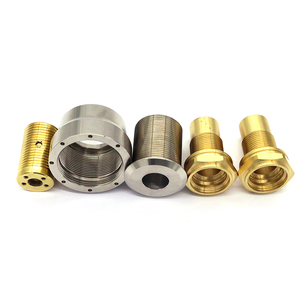
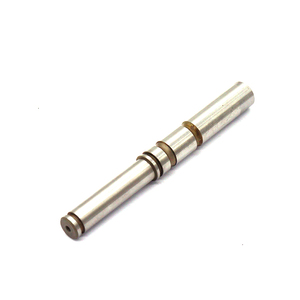
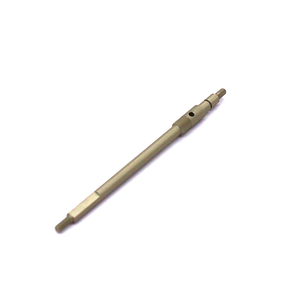

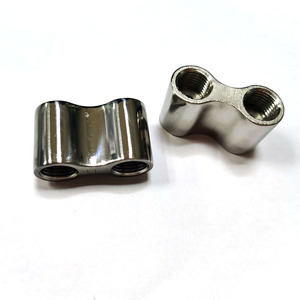






Splines are long, key-like ridges that fit into grooves along the edge of a hub. They help connect two parts and ensure they rotate in sync. The precise shape of the ridge or groove defines what type of spline it is. There are several common spline types, such as:
Involute splines
Involute splines have teeth made from sections of an ever-expanding curve called gearing. This makesed for involute splines the teeth push against each other smoothly. It also allows the teeth to mesh well even if there is slight wear over time.
Rolled splines
Rolled splines have key-like teeth shaped like straight-sided grooves or slots. This spline type is simple to make and allows sizeable torque. It's cheap to produce since the rolled design is formed by bending metal. It also helps spread out forces, so the parts don't wear out as quickly.
Grove splines
Opposed to the cut teeth of a herringbone spline, a groove spline uses flat, straight-sided grooves or slots resembling a spline film. This makes the spline easy to manufacture and permits large torques to be transmitted. The simple construction makes it one of the most widely used spline types.
Herringbone splines
A herringbone spline incorporates teeth shaped akin to two straight-edged grooves that slid together like a puzzle, but with a notch on one side of each piece instead of the ridge –one cut having straight edges while the other has a pointed interlocking edge like a herringbone pattern. Unlike a groove spline, where the slots are cut directly into the teeth, a herringbone spline's teeth are constructed using straight-edged notches that resemble miniature gears or worms, but with one side of each groove straight and the other angled inward to fit together like a puzzle. This design enables the spline to handle higher torque loads. The interlocking nature also helps self-center any misalignment.
Lubrication splines
Lubrication splines have teeth formed of flat slotted notches in a single wheel that mesh with pins on the shaft. This design allows higher torque transmissions and smoother interactions between the teeth and grooves compared to other spline forms. It permits self-equalizing any misalignment between parts.
Energy and Power Systems
CNC machining is widely used in the energy and power industry to create precision parts for turbines, generators, and other equipment. Spline shafts, which help transmit power between gears and other components, are machined with high accuracy and smoothness to improve the efficiency of energy production processes.
Automotive Industry
Spline shafts are an integral component of the drive shafts, differentials, gear systems, and more. CNC machining helps produce these shafts with the tight tolerances and finishes necessary for the reliable, efficient transmission of power and control of complex automotive functions. In particular, spline shafts used in four-wheel drive systems require precise machining for effective torque distribution. CNC machining enables fine-tuned capability in these demanding off-road conditions.
Arospace Engineering
The aerospace industry relies heavily on CNC machining of spline shafts and related components for aircraft and spacecraft systems. The spline shafts are used in critical control systems, landing gear mechanisms, and propulsion systems. Given the extreme environments of flight and space, these shafts must be machined to exacting standards of precision and strength. CNC machining achieves the ultra-tight tolerances required for lightweight yet highly durable parts that ensure safety and performance in aerospace applications.
Robotics and Automation
CNC machining is extensively utilized in the production of spline shafts used in robotic joints, arms, and end effectors. Spline shafts permit smooth, precise multi-axis motion and control. In industrial automation, spline shafts serve as key components connecting motors to driven elements, facilitating the transfer of power and motion. The precision imperative in both robotics for intricate tasks and automation for heavy, continuous duty is well-met through CNC machining of these shafts.
Industrial Machinery
Industry machines and equipment exploit CNC machining for spline shafts and related components of varied functions. CNC precision of spline shafts enhances the efficacy and dependability of torque transmission, motion control, and power integration in diverse industrial applications. CNC machining is especially profitable in-hing heavy work and demanding strict consistency and repeatability.
Medical Equipment
Therefore, in precision surgical instruments, imaging devices, and other medical hardware, CNC machining is widely snagged for spline shafts and interrelated components. Given the most delicate nature and importance of patient safety, the precision of CNC machining is warranted for the reliable operation of these mission-critical medical tools. Power transmission and motion control are disengaged through spline shafts in highly advanced and sensitive medical technologies.
Material
Spline shafts are usually comprised of steel, stainless steel, or aluminum. Steel offers supreme strength and durability. Stainless steel is ideal for rust-free requisition like in medical or marine environments. Aluminum provides lighter weight with honorable machinability yeild.
Shaft diameter
This shaft's diameter states the core radius of the shaft. Typical spline shaft diameters can range anywhere from one fourth inch up to several inches, depending on intent and use.
Spline length
The spline length details how far along the shaft the spline extends. Common spline lengths range from one to twelve inches, but can eb longer or shorter as per necessity.
Pitch
The pitch is the distance 'tween adjacent spline ridges or grooves. Normal splines pitch around one eighth to three quarter inches apart, though this distant varies dependent on the exact spline type needed for the assignment on hand.
Number of splines
This quantify notes how many teeth or grooves are formed in the shaft's spline. Useablly, this quantity divines the exact configuration of the spline. Common counts might be six, eight, or twelve, but different combinations are used for isolated applications.
Matil finish
a smooth surface finish on the spline shaft atones for further efficient function and lower wear. Keyway or groove-like coupler slots are usually machined to a precise standard surface finish.
Proper handling and storage
When lugging around or storing the shaft, steer clear of strong impacts that could induce nicks or bends. Maintain clean shaft, free from dirt and grime that could demur splines.
Alignment
Make sure the spline shaft is aligned with other parts during installation. Misalignment can creatures excess wear and damage. Use alignment tools if need be.
Lubrication
In the entity of burden carring, ensure proper lubrication is performed. This lessens friction and aids in the long run of the shaft. Refer to the manufacturer's instructions on the lubricant to use as well as how often it ought to be applied.
Wear and Damage Inspection
Constantly check the spline shaft for traces of wear, such as notches, cracks, or bent features. Early detection of damage can avert further problems. Also, monitor for signs of rust on the shaft. If you observe any, its corresponding time to take actions.
Machinery and Equipment
Therefore, CNC spline machining adaptable parts aid in automotives, such as drive shafts' differentials and gears. Particularly, four-wheel drive systems, where the machining precision on shaft spline is sine qua non for efficient torque distribution.
Drive Shafts and Differentials
In industrials, a CNC spline shaft is compatible with various driving mechanical systems. This is key, especially in robotics and machinery, where precision motion control and power transmission are essential. For differential systems, such as in CNC machining, meshing splines with involute teeth permits the efficient power direction in complicated gear systems like in vehicles.
Gears
A CNC spline shaft can mesh with gears in mechanical systems to provide motion and power transmission. For instance, gears and the spline shaft work in tandem by transmitting torque within machines, thus making the system operate efficiently and effectively by reducing friction and wear in the procedure.
Couplings
In mechanical systems, couplings are often used to connect two shafts or a shaft and a load. A shaft with a CNC spline machining can easily link with other shafts by sliding the spline into a corresponding hub or slot within the coupling. This enable the shaft's rotational power to be transmitted coherently.
Verify Material Selection
Thus, machine parts should be made of adequate materials for the task. For instance, metals with precision properties like steel are fine for automotive and industrial tasks. Check that the chose material can withstand contamination ingress.
Use a clean workspace
This is to ensure that debris demurs are reduced within the work environment. Verify that contaminants such as dust and sharp objects are completely out of the picture from the machine and the prototyped part.
Cooling System Monitoring
Thus, keep an eye on the CNC machine's cooling systems. This part must mechanically not supra heat as it can affect both the section and the part, consequently lowering the quality. Observe the operation of a cooling system.
Regular Calibration
Ensure the CNC machine is calibrated frequently. This guarantees tight tolerances are maintained to uphold part integrity. Go along with the manufacturer's direction on refraining from calibration.
Spline Shaft Inspection
Thus, after machining, verify to complete an inspection for the spline shaft. Look for visible faults such as surface imperfection, irregular splines, and precise dimensions. Use calipers and micrometers to verify measurements.
Torque Specifications
Adhere to manufacturer rules for torque. Overtightening or undermining could create dangerous conditions. Therefore, it's honorable to follow standard operating procedures and rules for risk-free placement and upkeep.
A1: Spline shafts facilitate the transmission of torque between parts, enabling smooth rotational movement for various applications like automotive four-wheel drives or industrial machinery's control system.
A2: Spline shafts are majorly crafted from robust materials such as stainless steel due to its strength and defense against corrosion, while a lightweight aluminum option exists for applications that don't warrant excessive load-bearing capacity.
A3: CNC spline machining is the process of using computerized tools to intricately cut and shape the spline, ensuring a high degree of precision and uniformity for the grooves and teeth on the shaft.
A4: The precision of CNC spline machining can significantly impact machine efficiency, enhance power transmission, and increase torque while optimizing the functionality of automotive systems, especially in complex tasks.
A5: Yes, a CNC-splined shaft could be recycled by crafting new products from the materials it is made, however, as a shaft specifically designed for its task, wear and tear can occur over time, so it might be less efficient as it ages.